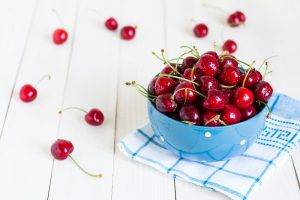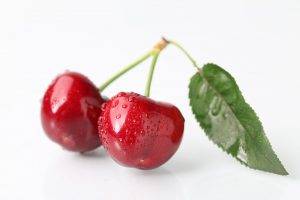
Cherry and cherry tree – Prunus avium-Prunus cerasus
Description of cherry and sour cherry trees
Prunus avium/Prunus cerasus Rosaceae – Rosaceae The cherry tree grows wild in our woods and bears small reddish, bitter-tasting fruit; cherries grown in the garden are a derivative. Cherries have egg-shaped, long-tongued, pointed and serrated-edged leaves and white flowers in dense clusters. The leaves are slightly wrinkled, with a fuzzy twine and glandular at the tip of the stem. The cherry tree is native to the East and is cultivated in our country. The cherry tree differs from the cherry tree in that its leaves are not wrinkled, are completely glabrous, slightly leathery and the stems are not glandular. The flowers of the cherry tree are in clusters of 3 or 4, whereas the cherry tree flowers are in clusters of a larger number. Both cherries and sour cherries have a bony stone fruit. The outer layer of the fruit wall is fleshy and soupy, the inner layer is hard and contains the seed. Both cherries and sour cherries are used in medicine. Black cherries and cherries are used to make syrup(syrupus cerasorum), and sour cherries are used to make liqueur and water(aqua cerasorum).
The cherry tree is native to the East and is cultivated in our country. The cherry tree differs from the cherry tree in that its leaves are not wrinkled, are completely glabrous, slightly leathery and the stems are not glandular. The flowers of the cherry tree are in clusters of 3 or 4, whereas the cherry tree flowers are in clusters of a larger number. Both cherries and sour cherries have a bony stone fruit. The outer layer of the fruit wall is fleshy and soupy, the inner layer is hard and contains the seed. Both cherries and sour cherries are used in medicine. Black cherries and cherries are used to make syrup(syrupus cerasorum), and sour cherries are used to make liqueur and water(aqua cerasorum).
Cherry juice is added to bad tasting medicines to improve the taste. The fruit stems or stalks of cherries, but even more so of sour cherries, are used in medicine under the name stipites cerasorum. The stems of cherries and sour cherries are boiled down and used successfully against hurricane-like ailments. It is advisable to collect the fruit stems from the fin and dry them carefully.
Occurrence:
All over temperate regions of Europe. In our country, it is planted in gardens and orchards, but also occurs in the wild.
Part to be collected:
Stems of the ripe fruit, 2 to 3 fingers long, cylindrical, green in colour. It is marketed as stipites cerasorum.
Active ingredient:
Tannic acid.
Harvesting and drying:
Fruit stems ripening between June and July should be collected and dried in an airy attic, spread out in a palm-thick layer.
Processing and marketing:
Used as an ingredient in tea blends. Source: Dr. Ferenc Darvas and Dr Gyula Magyary-Kossa,Domestic herbs, their production, marketing, effects and medicinal uses Béla Páter, Wild medicinal plants, their production, use, distribution, and marketing

